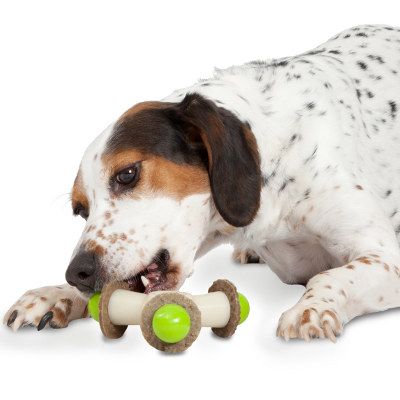Getting a new pet is a fun, exciting decision your whole family can enjoy together. There are lots of considerations in this process, from picking a name or the kind of collar to choosing who will feed and groom the new pet. When you bring a dog or cat into your home, you are extending love and protection to the animal and also making a commitment to its care. To do this, you’ll need to keep your pet safe and healthy. Typically this involves more than just providing food, water, shelter, and veterinary care. It also means making sure your pet can’t get into any potentially dangerous or deadly items in your home.
Pet Health for Dogs and Cats
Proper pet health encompasses everything from ensuring your pet has all current vaccinations to recognizing when he is sick and in need of veterinary care. These are the responsibilities every pet owner assumes the moment that they bring home a new pet. Basic health care involves taking care of a dog or cat's dietary, exercise, and veterinary needs. Pets can develop health problems due to a variety of factors. Some health issues may be common ailments that strike either dogs or cats, while other problems are unique or more serious for a specific breed or species. Knowing what health problems your pet is at a higher risk of developing and the steps you can take to prevent them will ensure your pet stays happy and healthy for many years to come.
- Basic Pet Care
- First Aid Tips for Pet Owners
- Recognizing and Caring for a Sick Pet
- Common Health Problems with Dogs
- WebMD: Old Dog Health Q &A: Health and dietary Concerns in Aging Dogs
- Cornell University College of Veterinary Medicine: The Special Needs of the Senior Cat
- Purdue University PDF: Common Cat Diseases and Health Problems (PDF)
- MedicineNet.com: Skin Problems in Cats Slideshow
Pet Dangers in the Home
Keeping pets indoors is better for their health than letting them roam outdoors, but that doesn't mean that pets are entirely safe or free from danger when they are inside. There are many risks that dogs and cats are routinely exposed to, some of which are poisonous or could make your pet sick. Everyday items and products, such as cleaning chemicals, food, plants, and decorations can prove dangerous to the health of both dogs and cats.
Identifying and removing toxic items from the home may even help resolve or explain sudden illnesses or health problems. Other dangers are non-chemical related, but can be just as harmful. For example, candles can burn a pet, while small objects or toys may prove to be choking hazards.
-
 Good Housekeeping: 10 Pet Dangers You Didn't Know About
Good Housekeeping: 10 Pet Dangers You Didn't Know About - Oklahoma State University PDF: Is Your Home Safe for Your Pet? (PDF)
- Common Household Dangers
- Household Dangers
- Protect Your Pet From Common Household Dangers
- Your Garage Can be a Dangerous Place
- FDA: Potentially Dangerous Items for Your Pet
- One Hundred and One Hazards to Your Puppy
Pet Exercise Needs
Like humans, a sedentary lifestyle can be detrimental to the health of both dogs and cats. Coupled with a poor diet, a lack of exercise can lead to weight gain and potentially expensive and serious health issues. If you’re a dog owner, you can ensure that your pets get enough exercise by including them in your own recreational activities and workout, particularly if you enjoy taking long walks or jogs. If you’re a cat owner, you may find it more difficult to actually "exercise" your cats, but you can play with them or purchase toys that will allow them to play in a more natural way. Some examples include dangling a feather toy on a stick, using a laser pointer in a dark room, or giving them an interactive/puzzle toy to challenge them. Cat exercise is also easier when you have more than one cat, as they can play together. Treat-holding or treat-dispensing toys are great for making your pet work for each meal, which reduces overfeeding and overeating and encourages active play.
-
 Animal Planet: Exercise and Playtime
Animal Planet: Exercise and Playtime - Exercising With Your Pet
- Prevention Magazine: The Pudgy Pet Problem – Ten Ways to Exercise with Your Pet
- Exercise Twice a Day Vital for Dog Health
- Exercise with Dogs Based on Specific Needs and Interest of Pet to Prevent Obesity
- Exercise for Cats
- ASPCA: Cat Toys
Pet Grooming for Good Health
For most of us, we groom our pets to keep them clean, trimmed, and fresh-smelling. There are other benefits outside of general appearance that make grooming an important part of the care and upkeep of your dog or cat. As a responsible owner, you should routinely check for potential issues that may pose a threat to your pet’s health as part of your grooming process. Potential issues that grooming may uncover include skin abrasions, infections, and other skin related conditions. The act of handling your pet and “de-clumping” fur may show masses, lesions, lumps, or cysts that are not initially obvious.
Fleas, mites, and other parasites that could be problematic for your animal's well-being are also easily detected by regular bathing, brushing, and trimming of fur. Cleaning your pet's teeth is another aspect of grooming that allows you to examine their teeth for any indications that there may be a problem, such as an abscess or bleeding gums, that requires veterinary care.
- American Kennel Club: Grooming
- Healthy Pet: Grooming Your Pet
- ClubPet: Grooming Reasons and Questions
- Animal Humane Society: Grooming Tips for Dogs and Reasons (PDF)
- Veterinary Teaching Hospital: Keeping Your Pet's Teeth Clean is Important to Their Overall Health
- Pet Dental Health Facts
Pet Safety Prevention Tips
You can avoid certain health issues by taking the appropriate steps to ensure your pet’s safety. Their health can be affected by weather conditions, holidays, travel, stress, and everyday items around the home. Prevention involves being aware of potential problems and reducing the risks and negative results of exposure to these dangers. Ensuring the safety of your pet is an important part of responsible pet ownership and pet care.


